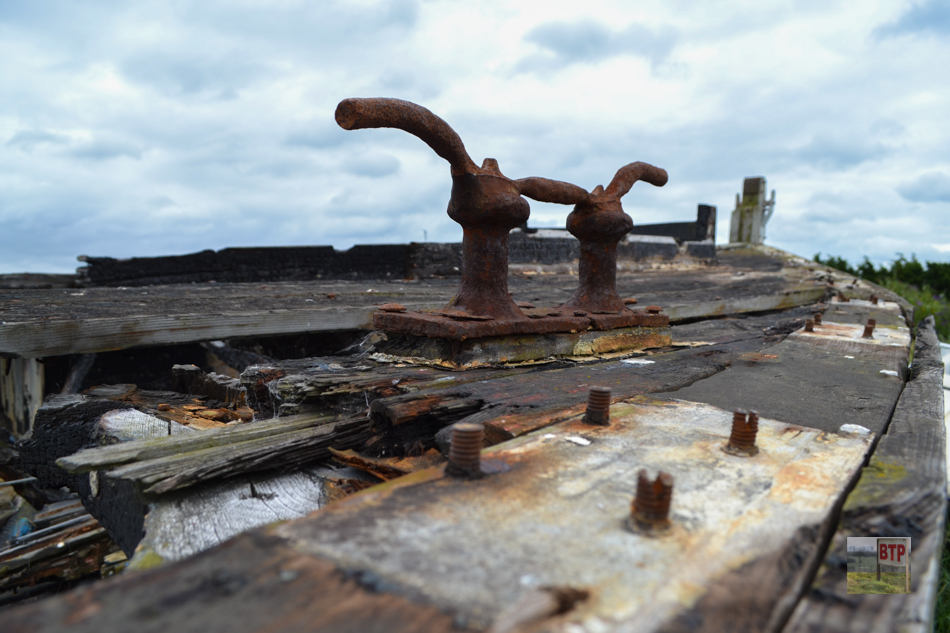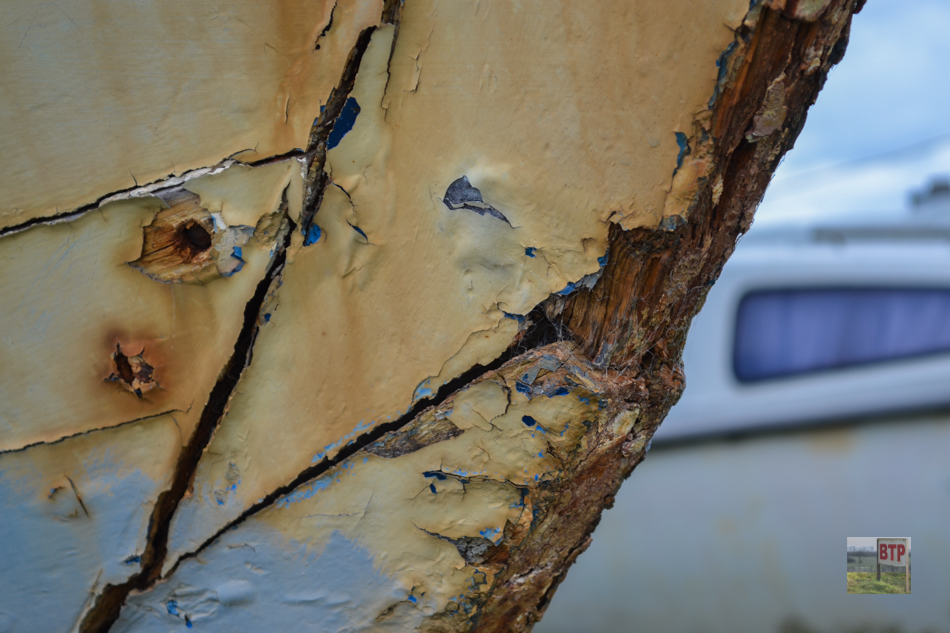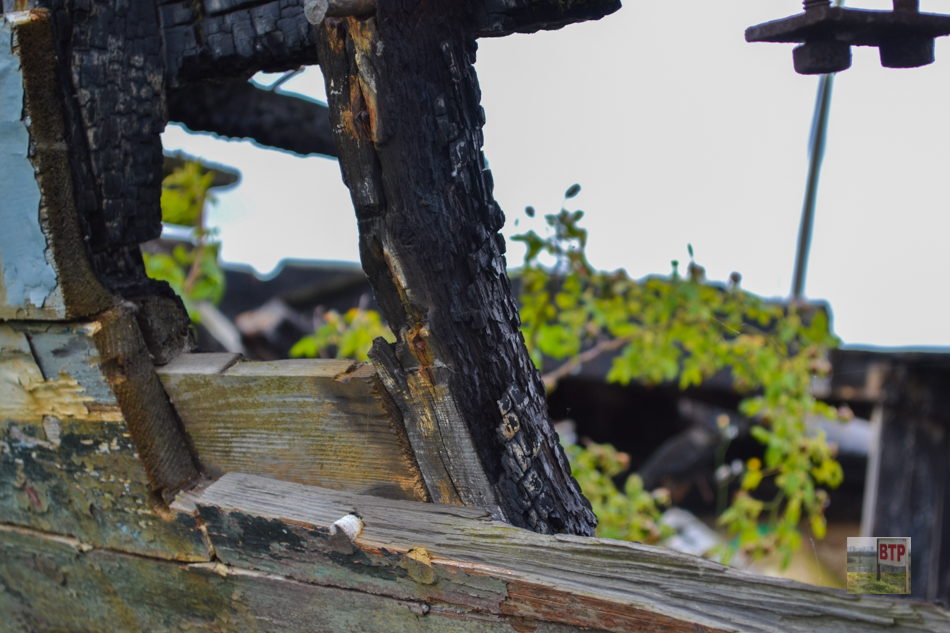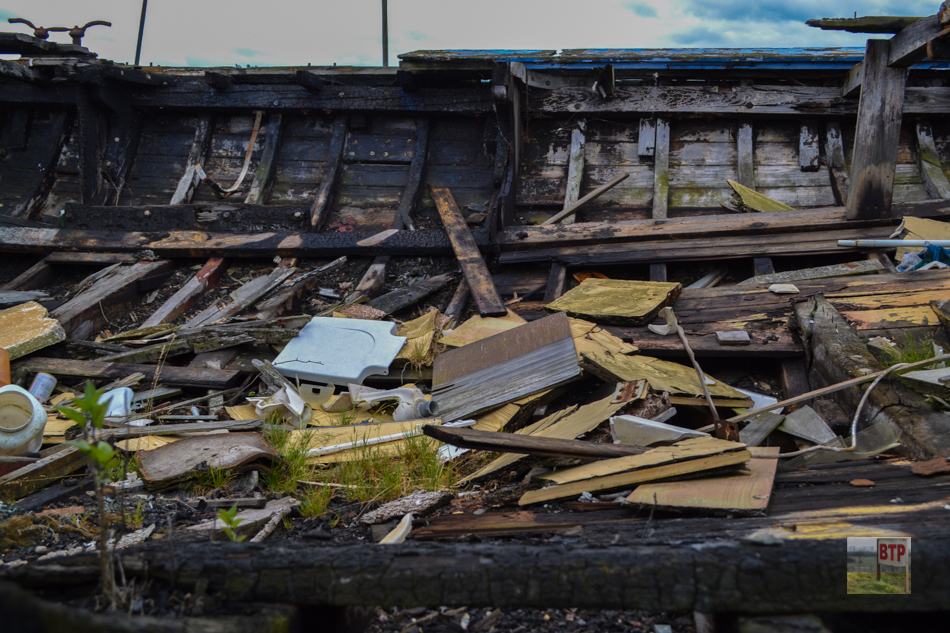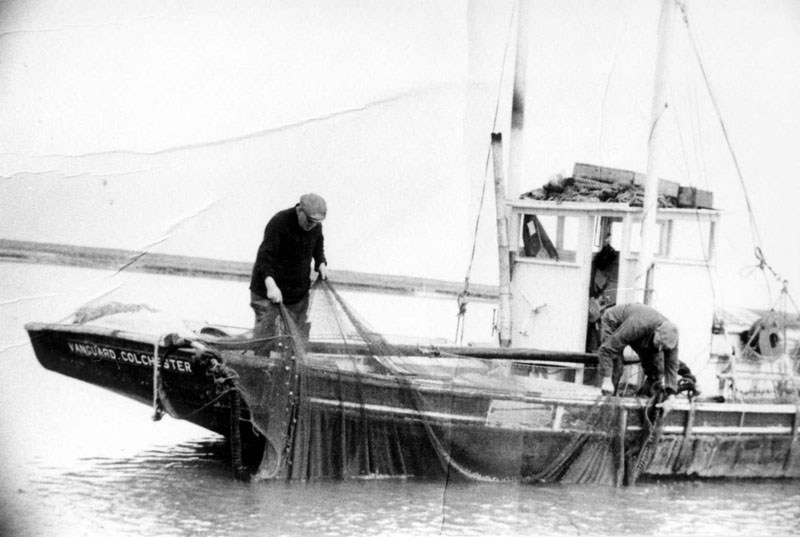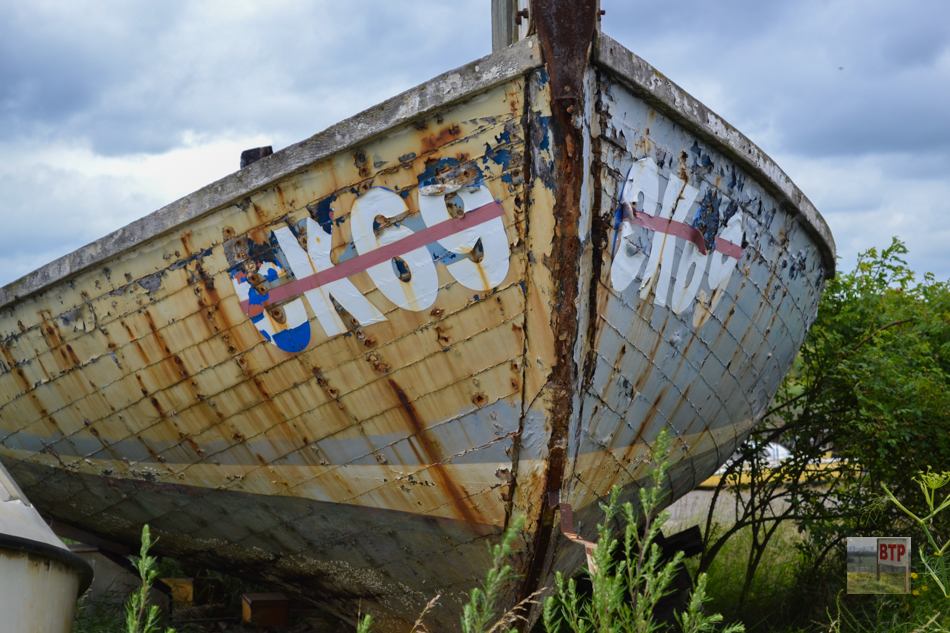
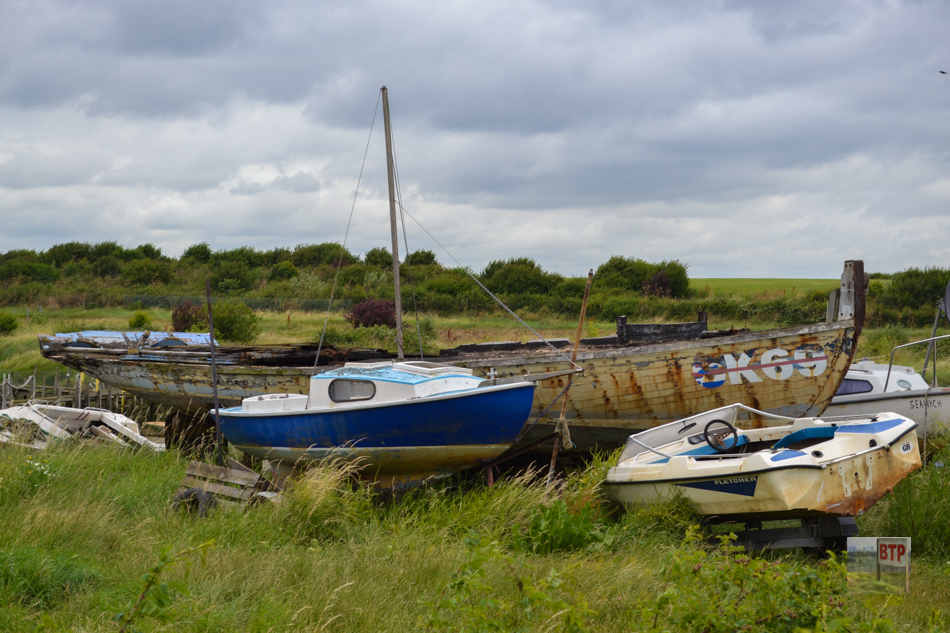
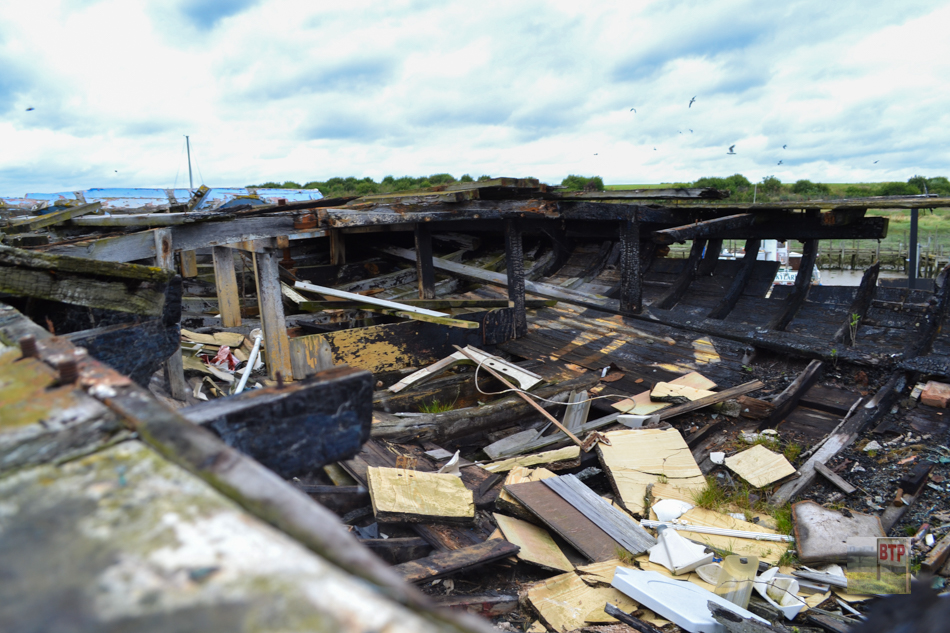
In 1940, The British Expeditionary Force, Britain’s main army, was sent into France to help the French troops drive back the Germans during the first British assault of World War Two. However they were rapidly struck back, and were left in pieces on the French coast from which they arrived. With the Germans closing in fast, and nowhere to go but the English Channel, these troops were evacuated via Operation Dynamo, commonly known as the ‘Battle of Dunkirk; which lasted from the 26th of May to the 4th of June. ‘The Little Ships’ were some 700 privately owned boats (mainly fishing boats) owned by British citizens, which were volunteers who responded to the call for private small boats to come to Dunkirk and rescue the cornered remains of the British fighting force. One such boat, built in 1937, came from Burnham-on-Crouch, and remains burnt after arson in Smallgain’s Boat Yard on Canvey to-date. It was a 6-man boat designed to catch oysters via ‘dredging’ – a method which involved lifting up sediments from the seabed and capturing fish (or in this case mollusks) in a net. Its remains can be seen publicly to this day, and was in fine shape until a recent arson attack in July 2008.
When we first visited the little ship, it was a bad condition; rotting and burnt we could never envisage how the boat could be saved however in 2018 it was moved up to Mangapps Railway Museum in Essex where a fundraising campaign is hoping to fully restore the ship to its former glory so that it can be seaworthy again.
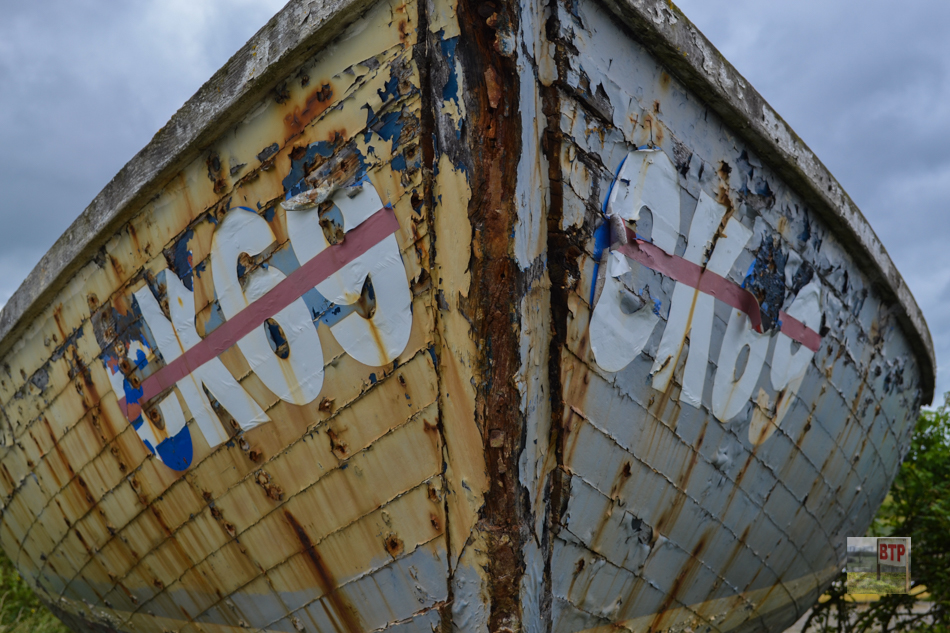

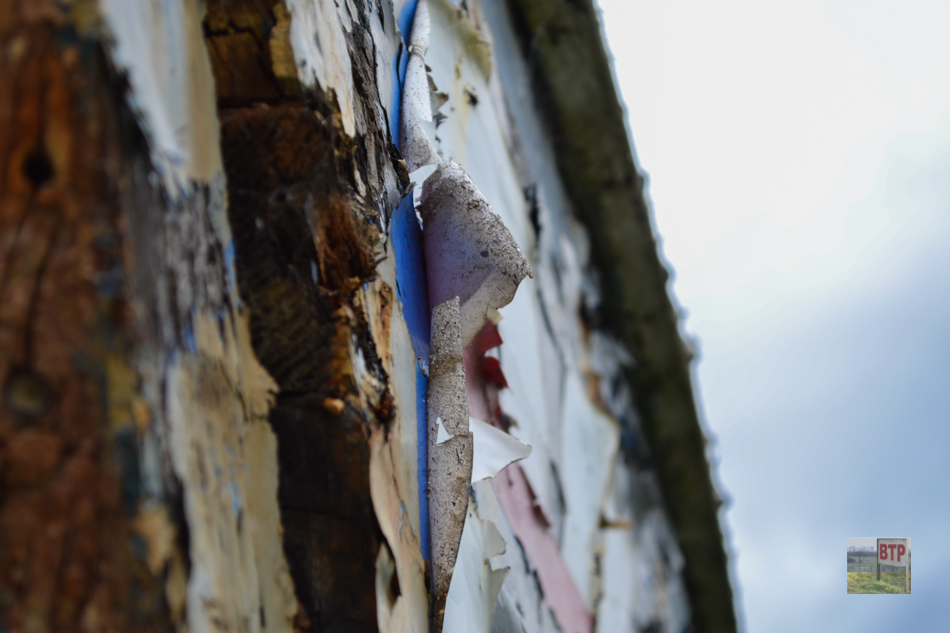
The ‘Association of Dunkirk Little Ships’ website details her:
Working boats are designed to suit their trade and the waters in which they earn their living. Our East coast rivers are muddy, tidal and tricky to navigate. But the oyster fishermen of the region know their waters like the back of their hands and their boats are designed to suit them, with a shallow draft, a low freeboard and wide decks to provide ideal working platforms. The Burnham Oyster Company had Vanguard purpose-built for dredging and she was designed to turn in her own length. Her deck allowed six men to work in comfort hauling in the nets. The deckhouse provided the minimum of shelter. Vanguard certainly was not intended for the open sea and would roll like a pig in anything above force 5.
Skipper Grimwade took her across to Dunkirk in 1940 with Joe Clough as his engineer. They went with another oyster dredger, the Seasalter which also survived and a ketch called Ma Joie which was abandoned and lost. They could not get into Dunkirk harbour, so they picked up the men from the beaches and 24 hours later, arrived back at Ramsgate loaded with troops.
Watch the section in our Dover Castle documentary on the Dunkirk Evacuations, featuring the CK69 boat
At the end of the war, Keeble & Sons of Paglesham, Essex bought the Vanguard and put her back to oyster dredging which their family had done on the rivers Roach and Crouch for fifty years on thirty-four acres of rented oyster beds. But the bad winter of 1962 decimated the oyster population.
Those which survived the ice and the cold and succeeded in breeding since then, are now faced with the increasing hazards of pollution. So W. Keeble sold Vanguard to Ron Pipe, a fisherman at Burnham-on-Crouch, who used her for in-shore fishing for a while and sold her again. Ten years later, Doug Whiting bought her back from another owner in a sorry state. Now he has enlarged her wheel-house, given up oyster fishing and has taken up shrimping on the Roach and Crouch.
Since then she has changed hands again.
